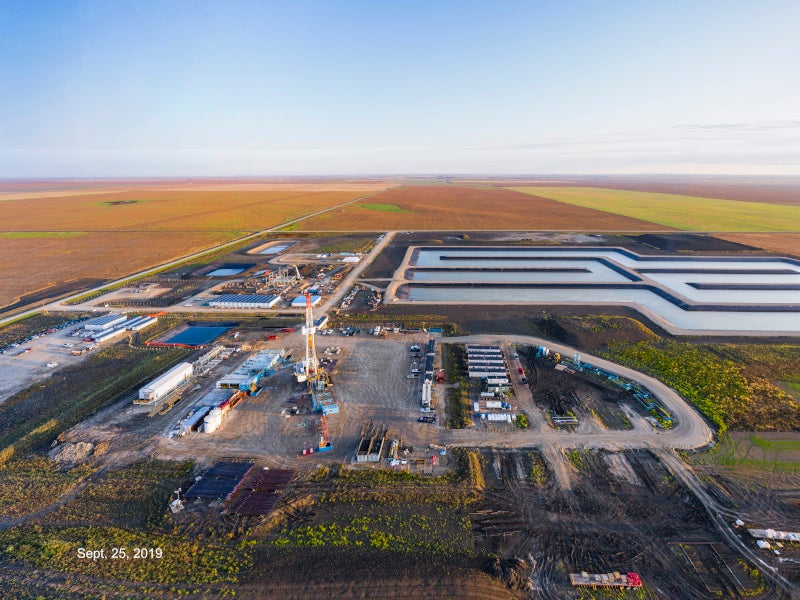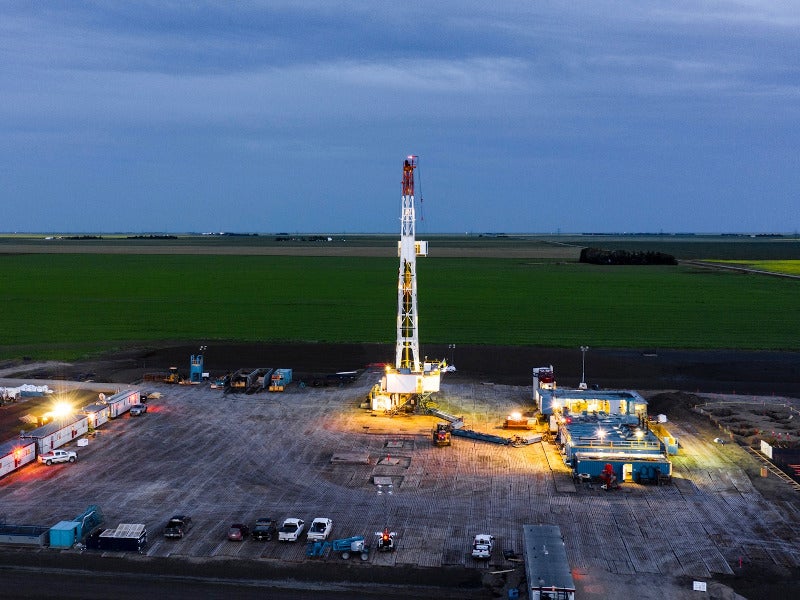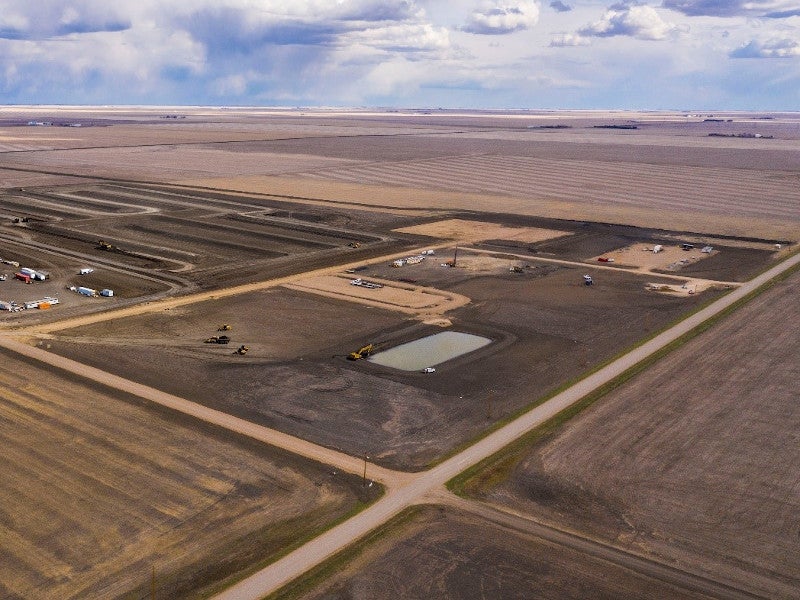The Milestone potash project in southern Saskatchewan, Canada, is being developed by Western Potash, a wholly owned subsidiary of Western Resources.
The site will be Canada’s first greenfield potash mine that will not deposit salt tailings on the surface, and decrease water and energy usage.
Milestone potash project development
The Milestone potash project development will involve three phases under a development plan, which was approved in April 2018.
The estimated investment will be C$120m ($89.41m) for phase I and C$3.3bn ($2.46bn) for phases II and III.
The first project phase will provide a production capacity of 146,000t a year while the total production capacity for the next two phases is projected to be 2.8 million tonnes per annum (Mtpa). A feasibility study for the Milestone potash project was completed in December 2012.
Western Potash obtained the environmental assessment permit for the full-scale project from the Government of Saskatchewan in 2013 and for the phase I project in 2017. Construction of the first phase officially began in June 2019.
Western Potash signed an agreement with Archer Daniels Midland in September 2019 for the offtake of 100% of potash production from the phase one project.
The Milestone phase one project commenced hot mining in April 2020. The project is 83% complete and the remaining construction of the process plant is expected to be finished by the end of 2020. The phase two and phase three expansions are targeted for completion in 2025 and 2030, respectively.
Milestone potash project location, geology, and mineralisation
The Milestone project site is situated 30km from Regina, Saskatchewan. Project covers more than 35,410ha of Crown mineral lands in Townships 13 through 15 and Ranges 17 through 19 West of the Second Meridian within the subsurface mineral lease KLSA 008.
The mining leases are located near Mosaic’s Belle Plaine mine and the potash permits owned by Vale, BHP, and the joint venture of North Atlantic Potash and Rio Tinto.
The potash mineralisation is present in Esterhazy, Belle Plaine, and Patience Lake members within the Prairie Evaporite Formation of Saskatchewan.
The sylvinite interval in the Prairie Evaporite contains interlocked sylvite crystals ranging from pink to translucent. The crystals may be rimmed by insoluble greenish-grey clay or bright-red iron, with slight halite scattered across the interval.
Milestone potash project reserves
The Milestone potash project was estimated to contain 182.79Mt of proven and probable reserves, according to a NI-43-101 report in 2013. Based on an updated report in 2020, the unitised area contains 154.5Mt of measured resources and 222.5Mt of indicated resources, grading at 29% of KCl.
Mining at Milestone potash project
The Milestone potash project will employ innovative selective solution mining methods and crystallisation ponds.
The phase I project aims to evaluate and optime the horizontal solution mining system and to explore the use of this approach for full-scale processing of potash.
The project will involve the simultaneous operation of three pilot production caverns. It will use three caverns for a period of six years, before utilising additional caverns.
The horizontally drilled wells will inject a saturated sodium chloride (NaCl) brine with a temperature greater than the temperatures of in situ rock formation to selectively dissolve potassium chloride (KCl), also known as muriate of potash (MOP), within the potash formation. The process leaves behind remaining NaCl. Each production well will be used to bring KCl-rich brines to the surface and heat recovery is conducted.
The brine will be then sent to a surface crystallisation pool to crystallise the KCl before being harvested via a dredge and the slurry is delivered to the processing plant where it will be debrined. The resultant KCl cake will be dried and compacted.
Processing at Milestone potash project
The processing plant will accommodate the extraction of primary and secondary potash solution to support an overall output rate of 2.8Mtpa for more than 40 years.
The final product will have a mix of 80% granular and 20% standard product with a potassium oxide grade of 62%.
The processing requirements of the potash project include six horizontal caverns for the first phase, a crystallisation pond, a processing plant, and infrastructure for product storage and loadout. A NaCl-saturated brine with a temperature of 100°C will be injected into the solution mining caverns and the production brine will be brought back to the surface through the production wells and pumped to the processing plant through a 2km-long pipeline. The brine will be then cooled to 12°C using barometric-cooling crystallisers.
The crystallisers will be cooled by mechanical refrigeration via a recirculating cooling loop and the recycling of the mother liquor. The KCl brine will be cooled in the crystallisers to precipitate KCl as the solubility of KCl decreases with dropping temperature.
The 12°C crystallising mother liquor will be reheated to 100°C and sent into the solution mining caverns. The crystallisation circuit will include a purge stream to bleed off MgCl2 in the brine.
The purge stream leads to a purge bath, from which the contents are transferred into the disposal well. The crystallised KCl is supplied to the centrifuge circuit. The centrifuges dewater the slurry to 95% solids. Decanted mother liquor will be returned to the crystallisers.
The centrifuge cake reaches the inlet of a natural gas-powered fluid-bed dryer to dry the KCl product, which is delivered to the loadout area for transportation to market.
Infrastructure facilities
The processing plant has access to Highways 33 and 308 via existing gravel roads. A new 3km-long gravel road was built to link the mining well field to the process plant.
The process plant is fed by water sourced from a nearby well. The project meets its water needs from the Mannville aquifer located 800m beneath the surface. The site is served by a 25kV overhead line and buried cables for power requirements. Another line will be established to link the larger transmission line and a natural gas regulator station.
Infrastructure also includes a storage and loadout building, and an administration building. The property also houses small structures for the boilers and electrical equipment.
Contractors involved
Western Potash awarded a contract to Stuart Olson to act as the general contractor for the construction of the phase I project, in June 2019.
In June 2018, SNC-Lavalin won a detailed engineering contract for the final stage of the phase I project.
Amec Foster Wheeler and Agapito Associates delivered a final report on the Milestone phase I plant project in December 2016.






